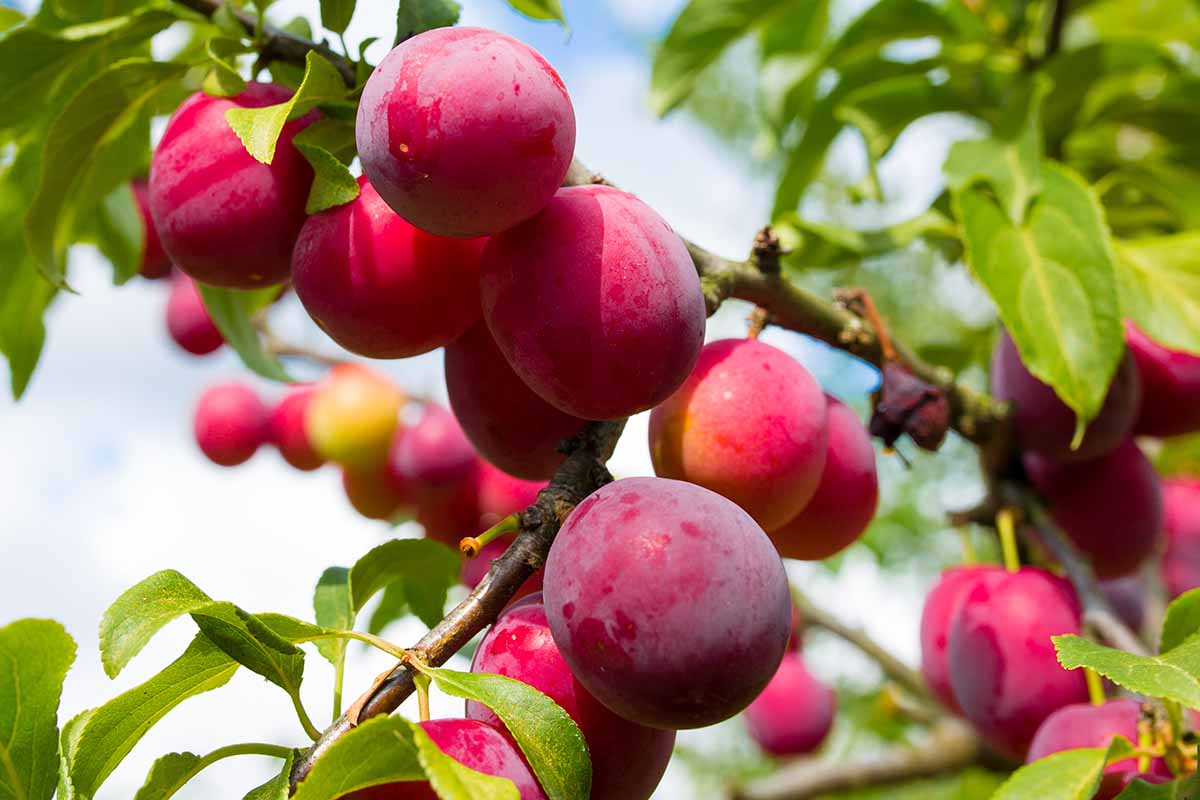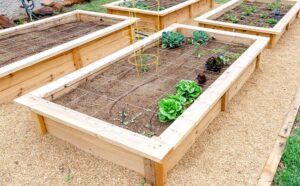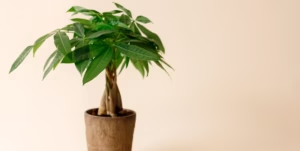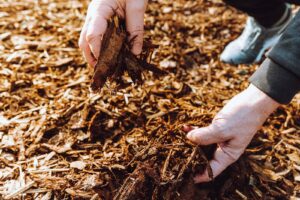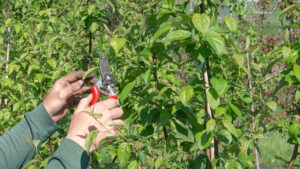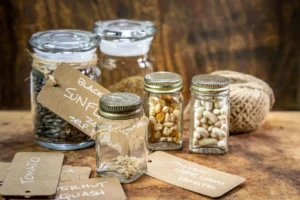Best Time to Prune Fruit Trees for Better Fruit This Summer
Are you looking to maximize your fruit harvest this summer? Proper pruning is one of the most essential practices for maintaining healthy fruit trees and ensuring abundant, high-quality yields. Knowing when and how to prune your fruit trees can make a significant difference in both the quantity and quality of your harvest. This comprehensive guide will walk you through everything you need to know about timing your pruning activities for optimal results.
Why Pruning Timing Matters
Pruning at the right time of year is crucial for fruit tree health and productivity. When done correctly, pruning:
- Removes dead or diseased branches that may harbor pests or pathogens
- Improves air circulation and light penetration throughout the canopy
- Directs energy to fruit production rather than excessive vegetative growth
- Encourages the development of new fruiting wood
- Makes harvesting easier by controlling tree size and shape
- Stimulates stronger, more resilient growth
However, pruning at the wrong time can stress your trees, reduce fruit production, or even make them susceptible to diseases. Let’s explore the best pruning times for different types of fruit trees to help you achieve the best possible harvest this summer.
The Ideal Pruning Calendar for Common Fruit Trees
Different fruit tree species have different optimal pruning times based on their growth habits and fruiting patterns. The following table provides a comprehensive overview of when to prune the most popular fruit trees grown in the United States:
| Fruit Tree Type | Best Time to Prune | Dormant Pruning | Summer Pruning | Notes |
|---|---|---|---|---|
| Apple | Late winter (Feb-March) | Yes | Light, July-August | Prune before buds break but after the harshest winter cold |
| Pear | Late winter (Feb-March) | Yes | Minimal | Similar to apples; avoid heavy summer pruning |
| Peach & Nectarine | Late winter to early spring | Yes | Light, after harvest | Require more annual pruning than other fruit trees |
| Plum | Late winter | Yes | After harvest | European and Japanese varieties follow similar timing |
| Cherry (Sweet) | Late winter or after harvest | Yes | After harvest | Susceptible to disease when pruned in wet weather |
| Cherry (Sour) | Late winter | Yes | Minimal | More cold-hardy than sweet cherries |
| Apricot | Early spring or late summer | Limited | Yes, after harvest | Avoid winter pruning in cold climates |
| Fig | Early spring | Yes | Minimal | Can also be pruned in fall after leaf drop |
| Persimmon | Late winter | Yes | No | Requires minimal pruning compared to other fruit trees |
| Citrus | Spring (after danger of frost) | No | Light, year-round | Never prune during winter in frost-prone areas |
According to the USDA Agricultural Research Service, timing your pruning to coincide with your specific climate zone can further optimize results. Always check your local extension office recommendations for region-specific guidance.
Dormant Season Pruning: The Foundation for Success
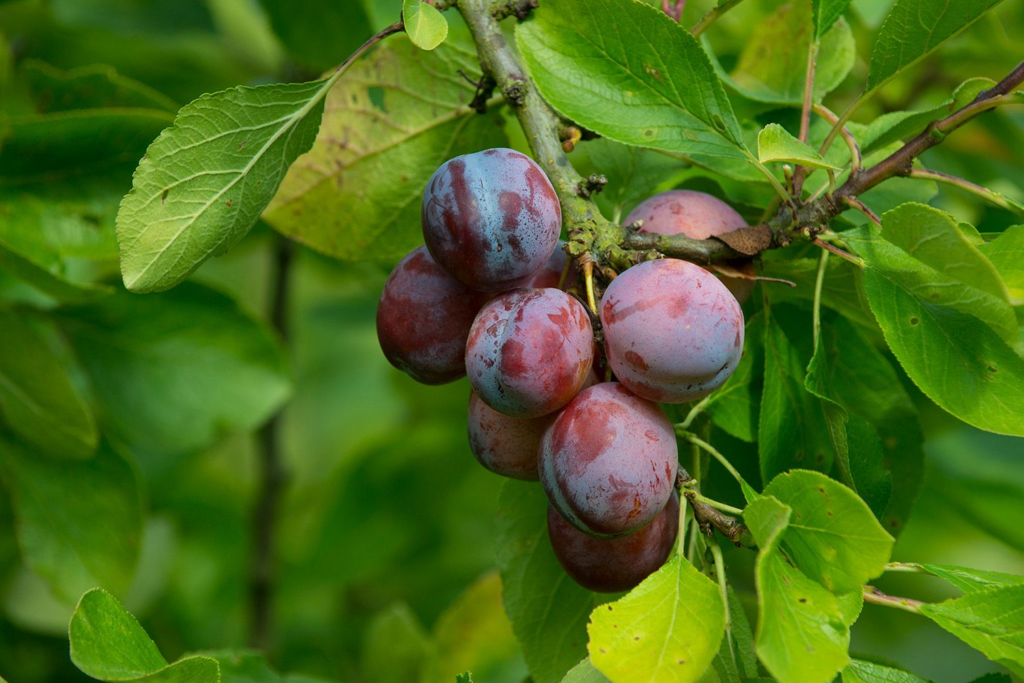
Why Winter Pruning Works
For most deciduous fruit trees, the late dormant season (late winter to early spring) is the ideal time for major structural pruning. When trees are dormant:
- The tree’s energy reserves are stored in the roots and trunk
- Without leaves, branch structure is clearly visible, making pruning decisions easier
- Healing is rapid once spring growth begins
- The risk of spreading diseases is lower
- Trees can recover before the stress of summer heat
For most regions in the US, February to early March represents the sweet spot for dormant pruning—after the threat of extreme cold has passed but before buds begin to swell and open.
What to Focus on During Dormant Pruning
When performing your main dormant season pruning, prioritize these tasks:
- Remove all dead, damaged, or diseased wood
- Eliminate crossed or rubbing branches that create wounds
- Thin out crowded areas to improve light penetration
- Remove water sprouts and suckers
- Shape the tree to maintain an open center or modified central leader, depending on species
- Cut back last season’s growth to encourage branching and fruit bud development
The dormant season is the time for major structural cuts that might remove up to 20-30% of the tree, depending on its age and condition. However, young trees should be pruned more lightly than established ones.
Summer Pruning: The Secret to Better Fruit Quality
While dormant pruning sets the foundation, strategic summer pruning can significantly improve fruit quality for the current season and help develop fruit buds for the following year.
Benefits of Summer Pruning
Summer pruning offers several distinct advantages:
- Controls vigorous vegetative growth
- Improves fruit color by allowing more sunlight to reach developing fruits
- Reduces tree size without stimulating excessive new growth
- Allows better air circulation, reducing disease pressure
- Helps identify and remove disease problems during the growing season
When to Summer Prune
The timing of summer pruning is critical and varies by fruit type:
Stone Fruits (Peaches, Plums, Cherries): Best done immediately after harvest when the trees still have plenty of time to heal before winter.
Apples and Pears: Mid to late summer (July-August) when terminal buds have set and new growth has begun to harden off.
Citrus: Light pruning can be done almost year-round in warm climates, but avoid winter pruning in areas with frost risk.
Summer pruning should be lighter than dormant pruning, typically removing no more than 10-15% of the canopy to avoid sunscald on previously shaded branches and fruit.
Specialized Pruning for Different Fruit Tree Types
Stone Fruits: Peaches, Nectarines, Plums, and Apricots
Stone fruits primarily produce fruit on one-year-old wood, making annual pruning essential for continued productivity. These trees benefit from an open-center pruning style that creates a vase-shaped tree with 3-5 main scaffold branches.
For peaches and nectarines in particular:
- Remove 50-75% of the previous year’s growth during dormant pruning
- Maintain tree height at 8-10 feet for easier harvesting
- Thin out the center to improve light penetration
Apricots and plums require less aggressive pruning than peaches but still need regular attention to maintain productive fruiting wood.
Pome Fruits: Apples and Pears
Apples and pears produce fruit on short branches called spurs that remain productive for several years. These trees typically perform best with a modified central leader system:
- Maintain a central trunk with tiers of outward-growing scaffold branches
- Remove competing leaders and inward-growing branches
- Thin out older spurs every 3-4 years to encourage renewal
Pears generally require less pruning than apples and can be more susceptible to excessive growth if pruned too heavily.
Citrus Trees: A Different Approach
Citrus trees differ significantly from deciduous fruit trees in their pruning requirements:
- Avoid winter pruning in frost-prone areas
- Focus on removing dead wood and water sprouts
- Prune primarily for shape and to remove tangled growth
- Light, regular pruning is preferable to infrequent heavy pruning
Citrus trees naturally grow into pleasing shapes and require minimal structural pruning compared to deciduous fruit trees.
Pruning Young vs. Mature Trees
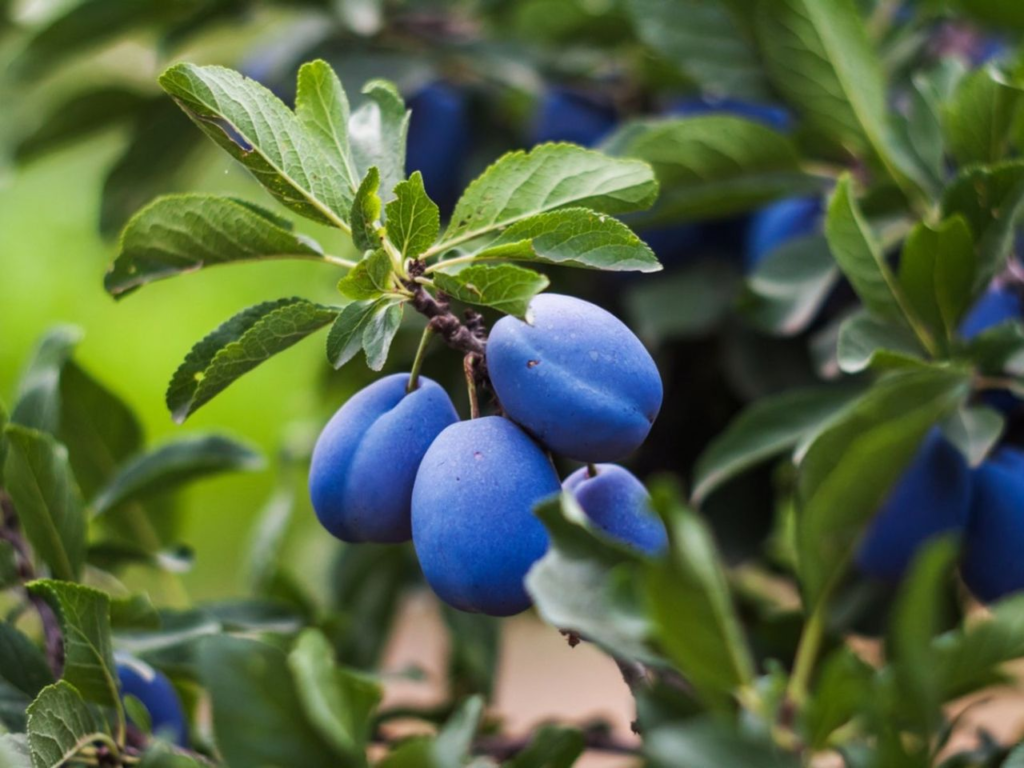
Training Young Trees (Years 1-3)
The first few years of a fruit tree’s life establish its fundamental structure for decades to come. During this crucial training period:
- Focus on developing strong scaffold branches with wide angles to the main trunk
- Remove competing leaders and branches with narrow crotch angles
- Limit fruit production to encourage strong structural development
- Make heading cuts to encourage branching where needed
According to the National Institute of Food and Agriculture, proper training during the first three years can add decades to a fruit tree’s productive lifespan.
Maintaining Mature Trees (Years 4+)
Once the basic structure is established, pruning focuses on maintaining tree health and encouraging productive fruiting:
- Remove dead, diseased, or damaged wood
- Thin congested areas to maintain good light penetration
- Control height for easier harvesting
- Remove older wood to stimulate new growth
- Maintain the basic shape established during training
Mature trees generally need less dramatic pruning than young trees, with the focus shifting to maintaining rather than establishing structure.
Essential Pruning Tools and Techniques
Quality Tools for Clean Cuts
Investing in quality pruning tools will make your work easier and result in cleaner cuts that heal faster:
- Hand pruners: For branches up to ½ inch in diameter
- Loppers: For branches ½ to 1½ inches in diameter
- Pruning saw: For larger branches
- Pole pruner: For high branches beyond reach
- Sanitizing solution: 10% bleach or 70% alcohol to disinfect tools between trees
Always keep your tools sharp and clean to make precise cuts and prevent disease transmission.
Proper Cutting Techniques
How you make your cuts is just as important as when you make them:
- Cut just outside the branch collar (the swollen area where branch meets trunk)
- Make clean, smooth cuts without leaving stubs
- Avoid tearing bark by using the three-cut method for large branches
- Make heading cuts ¼ inch above an outward-facing bud at a 45-degree angle
- Step back frequently to assess the overall tree shape
Proper technique minimizes healing time and reduces the risk of disease entry through pruning wounds.
Common Pruning Mistakes to Avoid
Even experienced gardeners can make pruning errors that impact tree health and productivity:
- Topping trees: Cutting back all branches to the same height stimulates water sprouts and weakens the tree.
- Removing too much at once: Never remove more than 30% of the canopy in one season.
- Making flush cuts: Cutting flush with the trunk removes the branch collar, which contains specialized cells that help heal wounds.
- Leaving stubs: Branch stubs die back and can become entry points for diseases.
- Poor timing: Pruning during wet weather or at the wrong time of year can increase disease susceptibility.
- Failing to sanitize tools: Diseases can easily spread from tree to tree on contaminated pruning tools.
Avoiding these common mistakes will help ensure your pruning efforts contribute to tree health rather than compromising it.
Regional Considerations for US Growers
Cold Climate Considerations (USDA Zones 3-5)
In northern states with harsh winters:
- Delay pruning until late winter/early spring when the risk of extreme cold has passed
- Avoid fall pruning, which can stimulate late growth that won’t harden off before winter
- Consider wrapping young tree trunks to prevent winter damage
- Be conservative with pruning volume in very cold regions
Mild Climate Advantages (USDA Zones 6-8)
In the middle regions of the US:
- Take advantage of longer pruning windows
- Consider split pruning sessions (some in late winter, some in summer)
- Monitor for earlier bud break that might shorten the dormant pruning window
Warm Climate Adaptations (USDA Zones 9-10)
In southern and western regions:
- Adjust timing to accommodate shorter or non-existent dormant periods
- Prune deciduous fruit trees during their brief dormancy
- Follow specialized schedules for subtropical fruits
- Be vigilant about sunscald on newly exposed branches
Pruning for Specific Goals
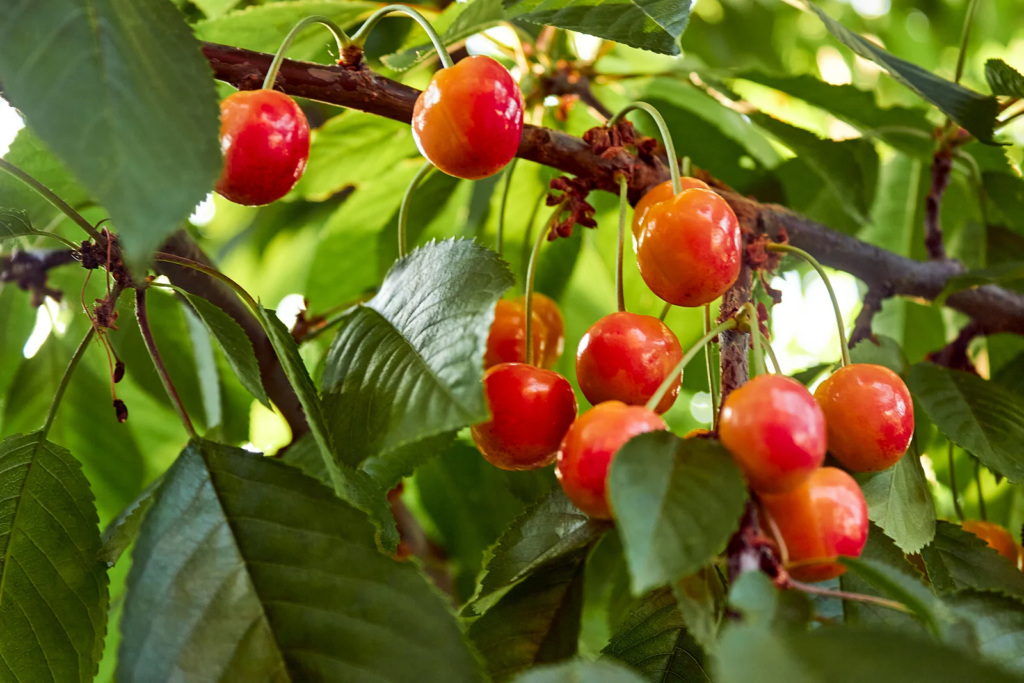
Maximizing Fruit Size
If larger fruits are your priority:
- Thin fruit aggressively after fruit set
- Prune more heavily during the dormant season
- Remove competing water sprouts during summer
- Consider specialized techniques like espalier for best light exposure
Increasing Total Yield
To maximize overall production:
- Maintain excellent light penetration throughout the canopy
- Balance the number of fruiting branches with the tree’s capacity
- Remove older, less productive wood to stimulate new growth
- Ensure proper fertilization to support increased production
Improving Disease Resistance
Pruning can play a key role in disease prevention:
- Remove all diseased wood, cutting back to clean tissue
- Improve air circulation to reduce humidity in the canopy
- Time pruning to coincide with dry weather
- Disinfect tools between cuts when dealing with known diseases
Conclusion: Planning Your Pruning Strategy
Developing a year-round pruning strategy will help you maximize the health and productivity of your fruit trees. Consider creating a pruning calendar based on the types of fruit trees you grow and your specific climate conditions.
Remember that pruning is both a science and an art. While following the guidelines in this article will provide a solid foundation, don’t be afraid to observe your trees closely and adjust your approach based on their specific needs and responses.
With consistent, timely pruning, you can look forward to healthier trees and more abundant, higher-quality fruit this summer and for many seasons to come. Your pruning shears might just be the most powerful tool you have for ensuring a bountiful harvest!
